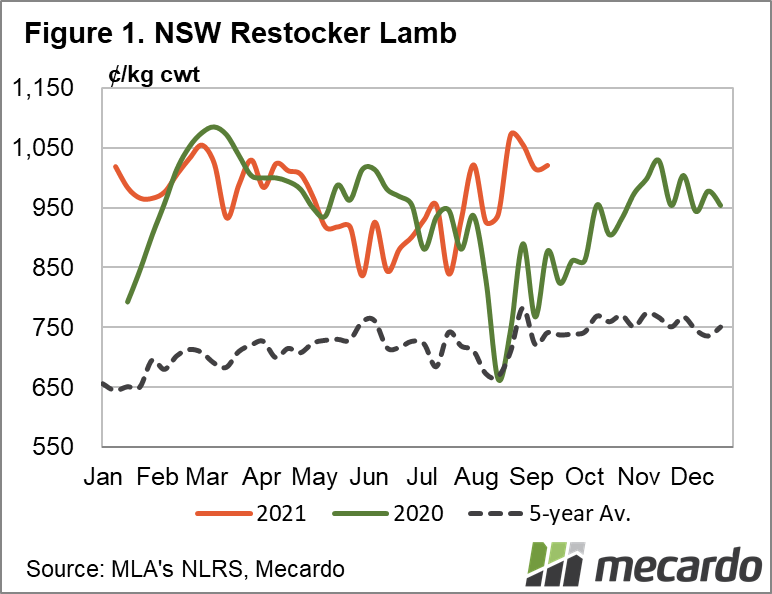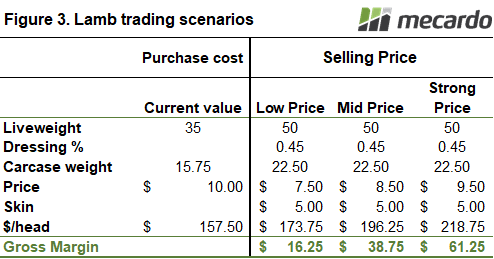With the lamb market and the season still going strong as we move through spring, it comes as little surprise to see restocker lambs hitting record levels. The risks going forward have been well documented, so we take a look at how much fat there is in store lambs as we move towards what is usually the price low.
The NSW Restocker Indicator has hit 1000¢ and held for three weeks, it is a pretty remarkable performance for this time of year, when prices are usually on the slide. Figure 1 shows NSW restocker lambs are at an extraordinary 300¢, or a 43% premium to this time last year, and the five-year average.
If we assume a 16kg carcase weight lamb, lambs are this year $45 more expensive. This is a huge bonus for those with early store lambs to sell.
The NSW Restocker Indicator hasn’t quite eclipsed the record set in March 20, but it was only four cents off recently. It is interesting to note that the NSW Restocker Indicator does normally rally in September, before easing again. The rally comes with the anticipation of spring grass supply, while falling finished prices see restocker values ease.
Figure 2 shows that the NSW Restocker Indicator is nowhere near its peak premium to the Eastern States Trade Lamb Indicator (ESTLI). This is a sign that the market does expect finished lamb to get cheaper, when it’s expected to be steady or stronger, we get a higher restocker premium.
It would seem those buying record priced store lambs are expecting prices of 800ȼ or better. Figure 3 shows that at 750ȼ/kg cwt there is very little in buying store lambs. But at 850ȼ the returns are pretty good, if lambs can be finished on green feed.
If prices remain steady, returns from store lambs will be very strong, even if lambs are being grain-fed. Obviously, the more weight lambs put on at these very good prices, the better the returns, but we’ve worked on 15kgs, which is achievable before the end of spring.
What does it mean?
Despite being close to record highs, store lambs look like reasonable buying, providing finished prices don’t end up lower than 800ȼ. That’s easy to say when prices are 15% above that level, but it was only 2019 when prices fell from a peak of 950ȼ to a low of 700ȼ, so don’t count it out. Admittedly the low was in December, so lambs being bought now might have been sold by then.
Have any questions or comments?
Key Points
- Restocker lambs have hit a record for this time of year, and close to all time.
- Despite being very strong, restocker prices are at an average premium to the ESTLI.
- If finished prices fall below 800c, margins will get tight on store lambs bought now.
Click to expand
Click to expand
Data sources: MLA, Mecardo















